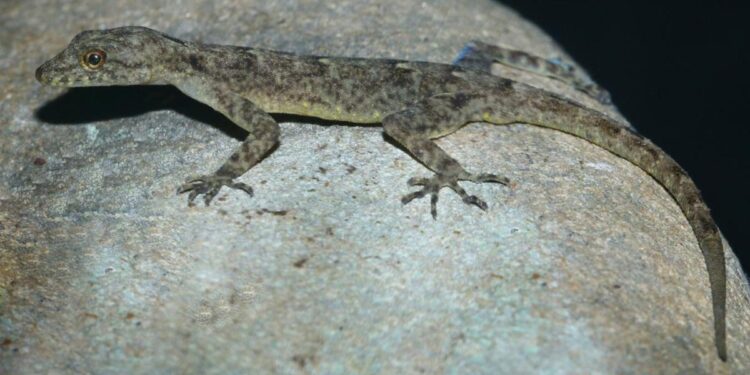A remarkable discovery has added to Assam’s vibrant biodiversity with the identification of a new diurnal gecko species on the northern bank of the Brahmaputra River at Dirgheswari Temple, facing Guwahati. Named Cnemaspis brahmaputra after the river, this day-active gecko stands out from most of its nocturnal relatives in Northeast India, marking a significant find for the region’s herpetofauna.
Assam Chief Minister Himanta Biswa Sarma announced the discovery on X, stating, “New addition to Assam’s rich biodiversity! A new species of day gecko has been discovered on the banks of the Brahmaputra & named Cnemaspis brahmaputra.” He noted that this is only the second species of its kind recorded in Northeast India and congratulated the researchers involved.
New addition to Assam’s rich biodiversity!
A new species of day gecko has been discovered on the banks of Brahmaputra & named Cnemaspis Brahmaputra.
This is only the 2nd species of such kind recorded in Northeast.
Congratulations to all the researchers behind this discovery. pic.twitter.com/Mi4CChLmyy
— Himanta Biswa Sarma (@himantabiswa) July 15, 2025
The discovery, documented in the latest issue of Taprobanica: The Journal of Asian Biodiversity, was led by researchers Amit Sayyed from the Wildlife Protection and Research Society, Maharashtra; A.A. Thasun Amarasinghe from Indonesia’s Research Centre for Biosystematics and Evolution; Madhurima Das and Rupankar Bhattacharjee from Assam Don Bosco University’s Department of Zoology; and Jayaditya Purkayastha from Help Earth, a biodiversity organization specializing in reptiles.
Cnemaspis brahmaputra belongs to the podihuna clade, a group of small, diurnal geckos previously thought to be primarily restricted to Sri Lanka. Its presence in Assam provides evidence of an ancient biogeographic connection between Sri Lanka and Northeast India, highlighting historical faunal exchanges across the Indian subcontinent. The species is genetically and morphologically distinct from its Sri Lankan relatives, with notable features including a larger body size, fewer mid-body scale rows, more ventral scale rows across the belly, no tubercles on the lower flanks, and three enlarged rows of thigh scales aligned with the femoral scale row.
This is the second Cnemaspis species identified in Northeast India, following Cnemaspis assamensis, discovered in 2000. Both species, part of the podihuna clade, are restricted to the Brahmaputra River valley, occurring on opposite banks of the river and exhibiting significant genetic differences.
The discovery underscores the ecological and evolutionary significance of the Brahmaputra River valley as a hotspot for unique biodiversity. Researchers hope this finding will spur further studies into the region’s herpetofauna and strengthen conservation efforts to protect its delicate ecosystems.





